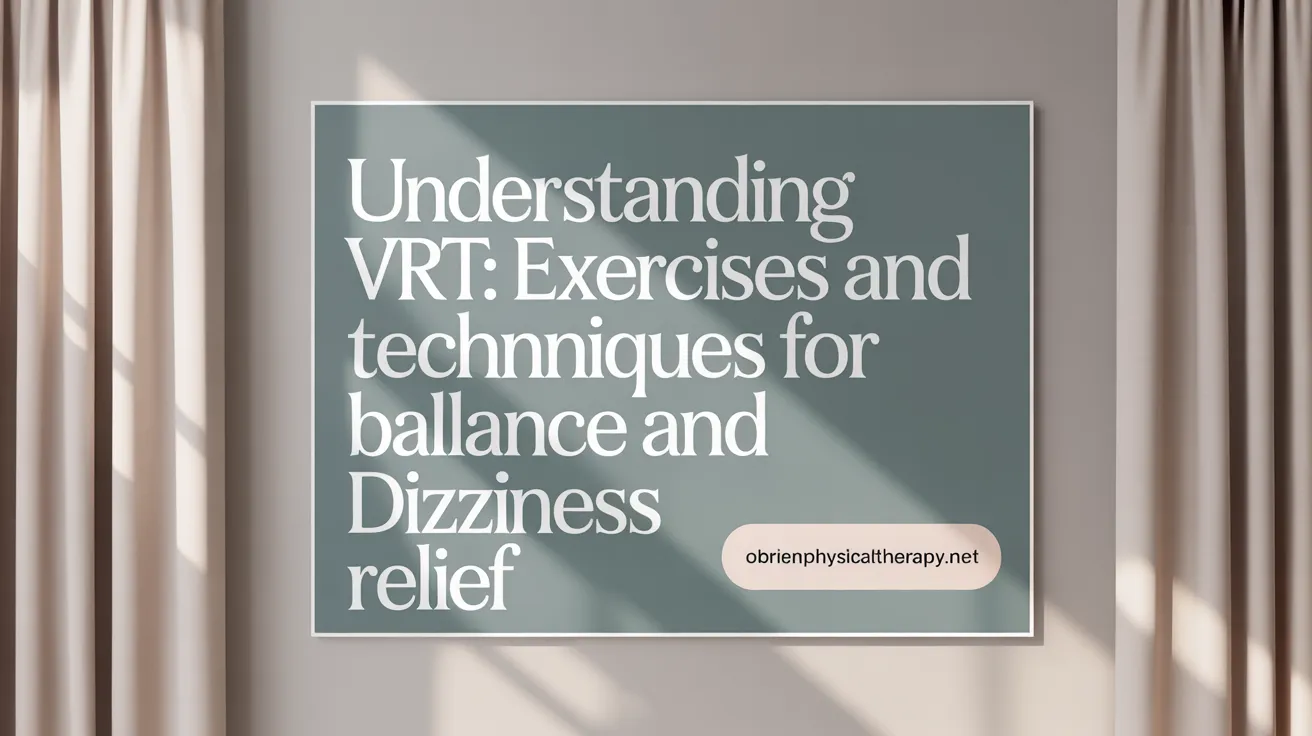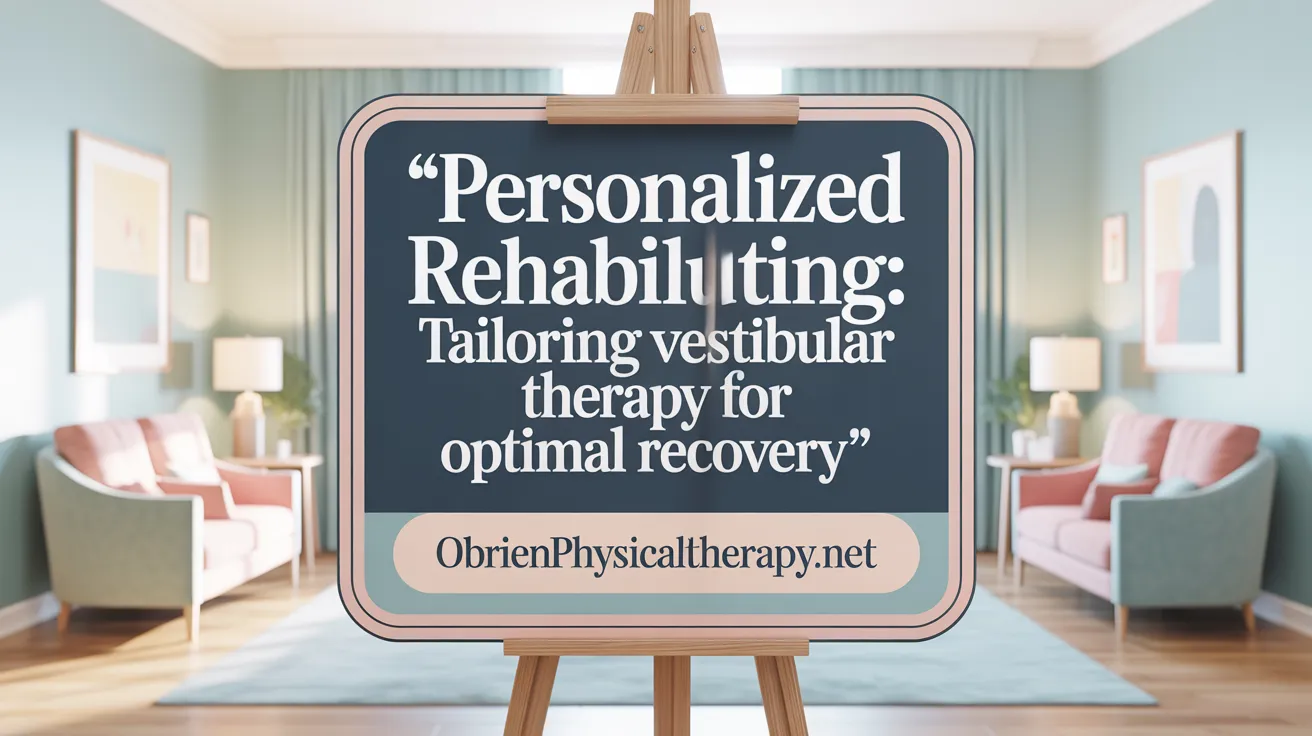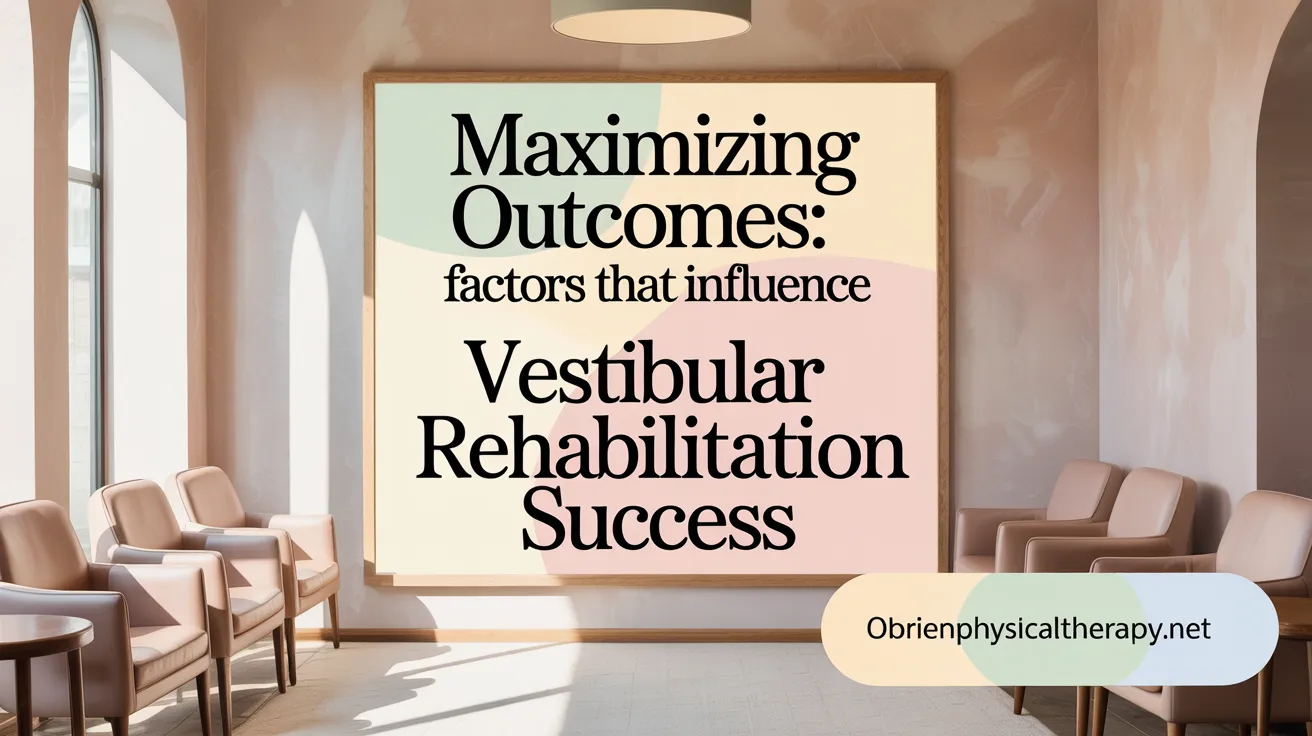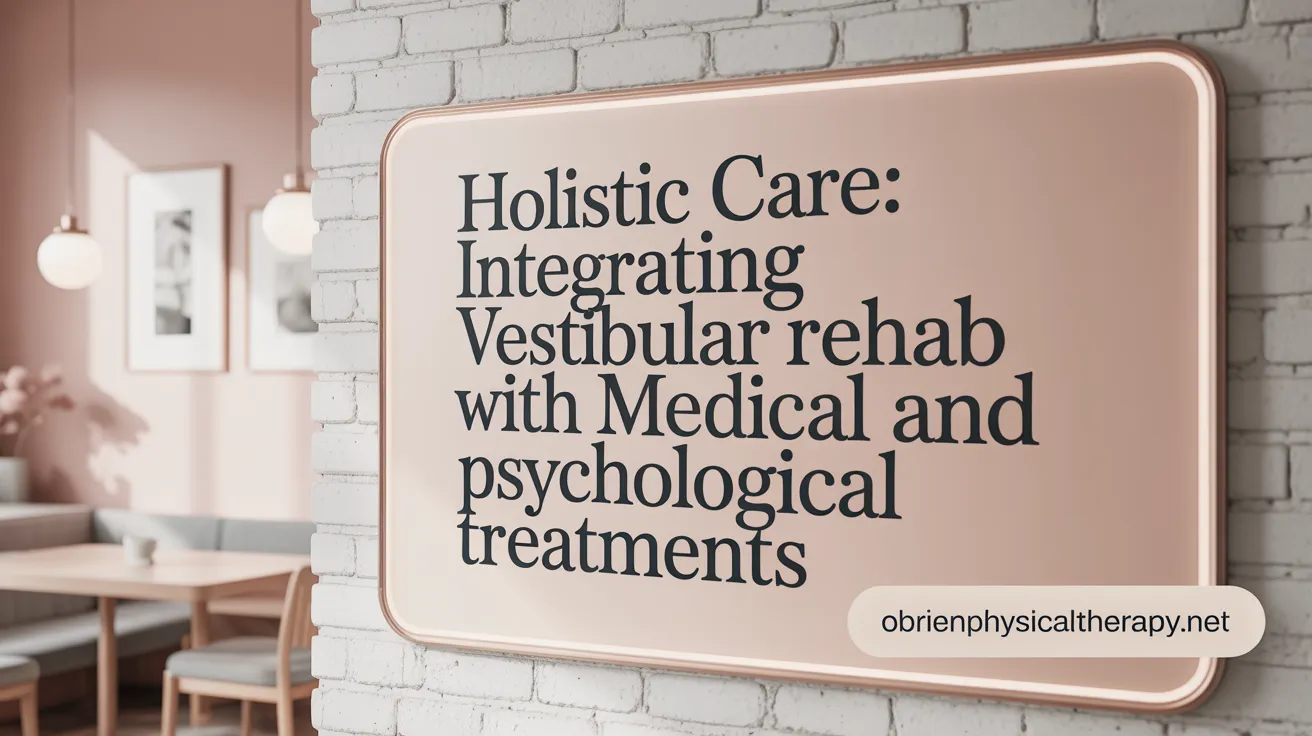Understanding Vestibular Disorders and Their Impact
Vestibular disorders are medical conditions that affect the inner ear and brain components responsible for maintaining balance and spatial orientation. These disorders can cause debilitating symptoms such as dizziness, vertigo, imbalance, nausea, blurred vision, and cognitive difficulties, severely impacting quality of life. Physical therapy, particularly vestibular rehabilitation therapy (VRT), plays a vital role in treating these conditions. This article explores how physical therapy addresses vestibular disorders, the mechanisms of recovery it promotes, and the customized treatments offered to patients suffering from these balance impairments.
The Nature and Causes of Vestibular Disorders
What are vestibular disorders and their common symptoms?
Vestibular Disorders refer to dysfunctions affecting the vestibular system, which includes critical structures in the inner ear and regions of the brain responsible for balance and spatial orientation. These disorders disrupt the body’s ability to maintain equilibrium, resulting in symptoms such as dizziness, vertigo (a spinning sensation), and imbalance. Individuals may experience difficulty standing or walking steadily, ringing in the ears (tinnitus), involuntary eye movements known as nystagmus, blurred vision, nausea, vomiting, and even challenges with concentration.
Common vestibular disorders include benign paroxysmal positional vertigo (BPPV), Ménière’s disease, vestibular neuritis, and labyrinthitis. Each condition presents with a unique combination of symptoms but shares the overarching effect of impairing balance and causing vertigo.
What causes vestibular disorders and what triggers episodes?
The root causes of vestibular disorders are diverse. They include natural aging processes that degrade vestibular function, head injuries that damage balance structures, infections leading to inflammation, and abnormalities like fluid imbalances in the inner ear. Additionally, tumors, autoimmune diseases, and neurological conditions such as stroke can contribute to vestibular dysfunction. For more on causes, see Causes of Vestibular Disorders.
Symptom flare-ups or episodes are frequently triggered by environmental factors, sudden head movements, certain foods, insufficient sleep, and emotional or physical stress. These triggers can exacerbate dizziness and vertigo, significantly impacting a person’s quality of life. See Triggers of Vestibular Episodes for detailed information.
What happens if vestibular disorders are left untreated?
Ignoring vestibular disorders can have serious consequences. The risk of falls increases significantly due to impaired balance, which can lead to injuries. Long-term untreated conditions may also cause permanent hearing loss. Furthermore, the persistent dizziness and imbalance can contribute to mental health challenges such as anxiety and depression, stemming from reduced mobility and social engagement.
Effective diagnosis and early treatment are crucial to managing symptoms and preventing these complications; see Vestibular Disorder Treatments and Vestibular Rehabilitation Therapy for current management strategies.
What is Vestibular Rehabilitation Therapy (VRT)?

What is vestibular rehabilitation therapy and how does it work?
Vestibular rehabilitation therapy (VRT) is a specialized, exercise-based physical therapy designed to help retrain the brain to compensate for dysfunctions in the vestibular system. This system, located in the inner ear and connected to the brain, controls balance and spatial orientation. VRT promotes vestibular adaptation and substitution—processes where the brain forms new neural pathways to enhance gaze stability, improve balance, and reduce symptoms of vertigo and dizziness. Learn more about Vestibular Rehabilitation Therapy (VRT).
Which conditions can be treated with VRT?
VRT is effective for managing many vestibular disorders. Commonly treated conditions include:
- Benign paroxysmal positional vertigo (BPPV)
- Ménière’s disease
- Labyrinthitis
- Vestibular neuritis
- Vestibular hypofunction
- Migraine-associated vertigo
- Vestibular issues following stroke or traumatic brain injury
- Age-related balance impairments
What are the benefits and typical duration of vestibular rehabilitation therapy?
The therapy offers multiple benefits:
- Reduces dizziness and vertigo
- Improves balance and postural control
- Decreases risk of falls
- Enhances visual stability during movement
- Increases mobility and confidence in daily activities
VRT programs typically last six to eight weeks with weekly sessions, though some individuals may need fewer or more sessions depending on the severity and specific needs. Details on duration and benefits of vestibular rehab.
Is vestibular rehabilitation therapy safe?
VRT is generally safe with minimal risks. Mild dizziness during exercises is common and expected as part of the brain’s adaptation, but therapists closely monitor symptoms and adjust treatment to ensure safety and comfort. For safety and therapy details, see Vestibular Rehabilitation Therapy Safety.
Evaluation and Personalized Treatment Planning in Vestibular Therapy

How are vestibular disorders assessed before physical therapy?
Assessment of vestibular disorders begins with a thorough review of the patient's detailed medical history and symptom reports. Physical and neurological examinations specifically focus on eye movements, balance, gait, and muscle strength to detect impairments. Advanced vestibular testing techniques are widely employed to pinpoint dysfunctions; these include videonystagmography (VNG), vestibular evoked myogenic potentials (VEMP), and video head impulse testing (vHIT) to evaluate vestibulo-ocular reflex function. Posturography measures balance control using visual environments, while rotary chair testing evaluates vestibular response during rotational movements. Imaging with MRI or CT helps rule out central causes or structural abnormalities.
Who provides vestibular rehabilitation therapy?
Vestibular rehabilitation therapy (VRT) is delivered by physical therapists who are specially trained and often hold board certifications in neurological or orthopedic specialties. These therapists possess expertise in balance disorders and tailor rehabilitation protocols accordingly. Additionally, audiologists and otolaryngologists contribute by conducting diagnostic assessments and collaborating on comprehensive management (Vestibular therapy).
How is treatment personalized?
Individualized therapy plans are crafted after detailed assessments to address each patient's unique vestibular impairments and clinical presentation. Treatment may include tailored gaze stabilization exercises, balance retraining to enhance postural control, habituation exercises to reduce dizziness caused by specific movements, and repositioning maneuvers when BPPV is diagnosed. Education about the disorder and a structured home exercise regimen are emphasized to promote ongoing recovery and prevent recurrence.
Use of diagnostic technology
State-of-the-art diagnostic tools guide therapy planning by identifying the precise nature and location of vestibular dysfunction. Technologies such as infrared goggles for eye movement recording and computerized balance platforms enrich clinical assessments.
Patient education and home exercises
Patient understanding of their condition and active participation through daily home exercises are crucial. Therapists provide clear instructions and progress exercises progressively, ensuring safe and effective rehabilitation that extends beyond clinical visits (Vestibular Rehabilitation Therapy).
Core Vestibular Rehabilitation Exercises and Techniques

What types of exercises are involved in vestibular rehabilitation therapy?
Vestibular rehabilitation therapy (VRT) incorporates various exercises to address dizziness and balance problems. These include:
- Head and eye movement exercises aimed at improving gaze stability, helping the eyes maintain focus during head motions.
- Balance retraining activities, which may be performed on stable or unstable surfaces to enhance postural control and coordination.
- Habituation exercises designed to reduce dizziness triggered by specific body or visual movements through repeated exposure.
- Stretching and strengthening exercises to improve musculoskeletal support for balance.
- Motor control training to refine coordinated movement and walking.
What are canalith repositioning procedures and their role in treatment?
Canalith repositioning procedures (CRPs), such as the Epley maneuver, target benign paroxysmal positional vertigo (BPPV). This condition occurs when calcium crystals (otoliths) become dislodged within the semicircular canals of the inner ear and cause vertigo.
The maneuvers use a series of controlled head and body movements to guide these crystals back to their proper position in the utricle, reducing or eliminating vertigo. These procedures are typically performed by trained healthcare providers but some can be adapted for safe home use.
What are gaze stabilization exercises?
These exercises involve focusing on a stationary or moving target while performing slow to rapid head movements horizontally and vertically. The goal is to strengthen the vestibulo-ocular reflex (VOR), improving visual clarity during head motion and reducing dizziness.
How do balance retraining approaches work?
Balance retraining uses progressively challenging activities that encourage reliance on sensory inputs like vision and proprioception. Techniques include standing on foam, walking with head turns, and eye-hand coordination tasks like catching or throwing a ball. Training focuses on restored use of normal postural strategies such as ankle or hip adjustments. Learn more about balance improvement exercises and balance retraining techniques.
Why are home exercises important in VRT?
Home exercises are essential for reinforcing therapy progress and maintaining vestibular compensation. Regular practice enables the brain to adapt to inner ear challenges, thereby speeding up recovery and reducing symptom recurrence. Patients are encouraged to adhere to prescribed programs while following safety precautions and professional guidance to avoid falls or overexertion. Additional information on home vestibular exercises and vestibular rehabilitation therapy benefits can guide effective self-care.
Successfully combining these exercise types and maneuvers enhances balance, stabilizes vision, reduces dizziness, and lowers fall risk, improving patients' overall quality of life.
Outcomes, Challenges, and Factors Influencing Recovery

How effective is physical therapy in treating vestibular disorders?
Vestibular rehabilitation therapy (VRT) has proven to be highly effective for most patients. It significantly improves balance, reduces dizziness and vertigo, decreases the risk of falls, and enhances overall functional mobility and quality of life. Many patients experience notable symptom relief within a few weeks of starting therapy, although some may require extended treatment.
What factors can influence the success of vestibular rehabilitation?
The success of VRT varies depending on several factors:
- Age: Older adults may experience slower recovery due to reduced neuroplasticity in vestibular rehabilitation.
- Type and severity of vestibular lesion: Stable lesions respond better than progressive or unstable conditions.
- Patient adherence: Consistency in performing prescribed exercises is critical for optimal outcomes.
- Other health issues: Comorbid conditions, medications, and emotional health such as anxiety can impact recovery.
- Timing: Early initiation of therapy often leads to better compensation and quicker improvement.
Are there patients who may benefit less from VRT?
Some individuals with ongoing labyrinthine pathology, unstable or progressive vestibular disorders, or central vestibular dysfunctions like cerebellar damage may experience limited benefits from VRT. For these patients, an adjusted or alternative management plan may be necessary.
What is the role of long-term exercise and management?
Maintenance of vestibular exercises beyond the formal therapy period is essential. Continuing these exercises helps sustain symptom control, reduce episodes of dizziness, improve balance in everyday activities, and prevent falls. Long-term commitment to these routines supports lasting neuroplastic changes and functional stability. Learn more about vestibular rehabilitation exercises and benefits.
Risk reduction and quality of life improvements
By improving balance and reducing dizziness, VRT substantially decreases the risk of falls, a major concern in vestibular disorders. Enhanced mobility and confidence allow patients to participate more fully in daily life, diminishing anxiety and depression associated with chronic dizziness, and ultimately improving their quality of life. For detailed information on reducing fall risk and quality of life improvements through vestibular therapy, visit the linked resource.
Integrating Vestibular Rehabilitation into Comprehensive Care

How is vestibular physical therapy integrated with other treatments?
Vestibular rehabilitation therapy (VRT) is an essential component of a multidisciplinary approach to managing vestibular disorders. It complements medical treatments such as medications, canalith repositioning maneuvers (like the Epley maneuver), and surgical interventions when required. Psychological support is also integrated to address anxiety and depression often associated with chronic vestibular symptoms. Collaboration among neurologists, otolaryngologists, audiologists, and physical therapists ensures that patients receive comprehensive care tailored to their individual needs.
What technologies enhance vestibular rehabilitation?
Technological advances play a significant role in improving vestibular rehabilitation outcomes. Virtual reality (VR) environments provide immersive and engaging therapy experiences, helping patients perform vestibular exercises with higher compliance and enjoyment. Infrared goggles and video systems enable precise recording and tracking of eye movements and balance assessments, assisting therapists in diagnosing dysfunction and customizing treatment plans.
What safety and educational measures are emphasized during therapy?
Patient safety is a priority throughout vestibular rehabilitation. Therapists provide education on symptom recognition, including warning signs such as sudden hearing changes, ear fullness, or neck and back pain during exercises. They instruct patients in safe exercise performance, fall prevention strategies, and when to seek medical advice. Therapy regimens are individually tailored and progressively intensified based on tolerance, with close monitoring to minimize risks.
What are future perspectives in vestibular physical therapy?
Future directions in vestibular physical therapy involve integrating advanced technologies like personalized virtual reality platforms that adapt to patient progress. Improved diagnostic tools will facilitate highly individualized treatment strategies. Additionally, complementary approaches such as chiropractic neurology and integrative medicine are gaining traction to optimize neuroplasticity in vestibular rehabilitation and overall recovery. These innovations promise enhanced rehabilitation effectiveness and better quality of life for patients.
The Vital Role of Physical Therapy in Overcoming Vestibular Disorders
Physical therapy, through vestibular rehabilitation therapy, offers an evidence-based, personalized approach to managing the complex symptoms of vestibular disorders. By leveraging the brain's capacity for neuroplasticity, tailored exercises and techniques restore balance, reduce dizziness, and improve quality of life. Early evaluation and consistent participation in therapy and home exercises optimize recovery and minimize fall risks, fostering independence and well-being for those affected by these challenging conditions.
